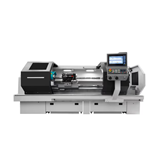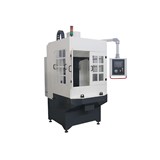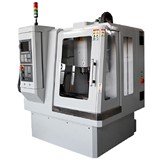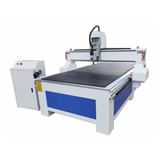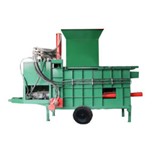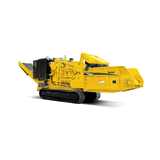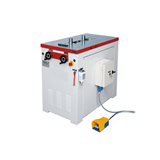Looking to buy a CNC horizontal machining centre in Australia? Get the latest prices, operation insights, maintenance tips, and compliance guidance here.
Key takeaways
- Prices: CNC horizontal machining centres in Australia typically range from $50,000 to $500,000+, depending on size, axis configuration, spindle speed, and automation features.
- Types: Machines vary from 2-axis models for basic milling to multi-axis (4+ axis) centres with automatic pallet changers and tool magazines for high-volume, multi-face operations.
- Industries: Widely used in aerospace, defence, mining, rail, and precision component manufacturing, where accuracy, rigidity and volume are critical.
- Maintenance costs: Expect $5,000–$15,000 per year, including lubrication systems, spindle inspection, and preventative service.
- Financing options: Equipment finance in Australia is available from around $2,000/month, depending on the loan structure and asset value.
- Compliance: Machines must meet AS/NZS 4024 machinery safety standards, and Safe Work Australia guidelines on guarding and operator safety.
- Lead times: Machines with advanced customisation or imported brands may involve lead times of 12–24 weeks. Local support is vital for uptime.
- Warranties: Most new CNCs include a 12–24 month warranty, often excluding consumables and wear parts.
Introduction
A CNC horizontal machining centre (HMC) is a powerhouse in advanced manufacturing—designed for high-precision, high-volume metal component production. Whether you're a job shop scaling up or a large manufacturer replacing legacy equipment, selecting the right HMC can significantly impact throughput, efficiency, and ROI.
This buying guide is tailored to Australian manufacturers, covering everything from machine types and pricing to warranties, safety compliance, and financing. Let’s help you make a smart, future-ready investment.
Types of CNC horizontal machining centres
CNC HMCs are classified based on axis configuration, spindle orientation, automation features, and size. Here's what you need to know:
1. Basic 2-axis or 3-axis HMCs
- Suitable for simpler, flat-plane machining.
- Entry-level for small to medium workshops.
- Lower cost and easier to program.
2. 4-axis and 5-axis HMCs
- Allow for multi-face machining without manual repositioning.
- Ideal for complex aerospace, mining and automotive parts.
- Reduces handling, improves accuracy, and shortens cycle time.
3. High-speed HMCs
- Feature higher RPM spindles (up to 20,000 RPM).
- Used for lightweight alloys or rapid material removal rates.
4. HMCs with pallet changers
- Dual-pallet systems improve uptime and throughput.
- Allow operators to load/unload while machining continues.
CNC horizontal machining centre prices in Australia
Australian pricing is influenced by brand, capacity, axis configuration, and local support availability. Based on 2025 market data:
- Basic 2- or 3-axis machines: From $50,000–$200,000
- Mid-range 4-axis HMCs: Between $220,000–$350,000
- High-end 5-axis HMCs with automation: $400,000–$600,000+
Operation and productivity factors
Understanding machine specs and how they impact your production is crucial:
- Spindle speed and torque: Dictates metal type and removal rate suitability.
- Tool magazine capacity: More tools mean fewer interruptions and setup changes.
- Table size and weight capacity: Impacts the scale of components you can machine.
- CNC control software: Ensure your staff or integrator supports the system.
Maintenance and service needs
Regular servicing ensures precision and uptime. Here’s what to budget for:
- Lubrication and coolant system checks – every 1–3 months.
- Spindle inspections – annually, or per 2,000 hours of operation.
- Ball screw and guideway greasing – quarterly.
- Software updates and diagnostics – annually, often included in service agreements.
Expect annual costs between $5,000 and $15,000, depending on use hours and service plan inclusions.
Spare parts and consumables
While many CNC HMC parts are robust, certain consumables and wear items require routine replacement:
- Cutting tools and inserts
- Coolant filters and fluids
- Spindle belts and drive components
- Proximity sensors and tool changers
Spare part availability is faster when machines are sourced from local reps, reducing downtime risk.
Installation and site requirements for CNC Horizontal Machining Centres
Proper installation is critical for performance, safety, and longevity. Here’s what to prepare before delivery:
Floor space and footprint
- Minimum area: 3.5m x 4m for small units; up to 7m x 10m for large machines.
- Clearance: 3.5–4m ceiling height; 1m access space around machine.
Power supply
- Requirement: 415V, 3-phase.
- Draw: 15–50kVA depending on size.
- Compliance: Must meet AS/NZS 3000 standards.
Air and coolant
- Compressed air: 6–8 bar, filtered and dry.
- Coolant: Compatible filtration and recycling setup required.
Foundation and vibration
- Weight: 7–30 tonnes.
- Slab: Minimum 300mm reinforced concrete for larger units.
- Levelling: Precision levelling and vibration control are essential.
Safety and environment
- Ventilation: Needed for certain materials.
- Lighting: Bright and shadow-free.
- Standards: Comply with AS/NZS 4024.
- Temperature: Maintain 20–26°C for accuracy.
Pre-installation checklist
- Layout and foundation confirmed
- Power and air ready
- Safety and compliance checks complete
- Riggers and installers scheduled
- Operator training planned
Well-prepared sites reduce downtime, avoid costly errors, and ensure smooth commissioning.
Financing CNC HMCs in Australia
Investing in a CNC horizontal machining centre is capital-intensive but manageable with flexible finance:
- Chattel mortgages
- Finance leases
- Operating leases
- Hire purchase arrangements
Monthly repayments can start from $2,000–$6,000, depending on asset value, term length, and your credit profile.
Looking to finance a CNC machining centre? EasyAsset offers tailored equipment finance for Australian manufacturers.
Warranties and after-sales support
Most new CNC HMCs include a 12 to 24-month warranty covering manufacturer faults. Confirm whether this includes:
- On-site service
- Spindle repairs or replacements
- Software updates
- Remote diagnostics
Always confirm warranty transfer conditions if buying used.
Compliance and certification in Australia
Buyers must ensure machines meet:
- AS/NZS 4024 standards – Machinery safety design, guarding and emergency stops.
- Safe Work Australia – Requires risk assessments and compliance with machine guarding standards.
- Electrical and installation standards – Particularly for imported machinery, which may need conversion or certification.
Some industries (aerospace, defence, rail) may require documentation for ISO 9001:2015 or traceability requirements tied to production accuracy.
Frequently asked questions
How long does a CNC HMC last?
With regular maintenance, a high-quality machine can last 15–25 years, though control systems may require upgrading earlier.
Is it better to buy new or used?
New machines come with the latest tech and warranties. Used CNCs are often 30–50% cheaper, but may need retrofit work or updated controls.
What size machine do I need?
Choose based on:
- Your largest part dimensions
- Required tolerances
- Volume of production
- Available workshop floor space
How long does installation take?
Professional installation typically takes 1–3 weeks, including setup, alignment, calibration, and test runs.
Can I integrate the machine into my existing production line?
Yes, most machines with standard PLC interfaces and network capabilities can integrate into existing CAD/CAM systems.
Final thoughts
Buying a CNC horizontal machining centre in Australia is a strategic investment. When chosen wisely, it enhances your production capabilities, improves part quality, and reduces long-term operational costs. Use this guide to evaluate your options and work with local suppliers who understand Australian standards, service expectations, and business conditions.




